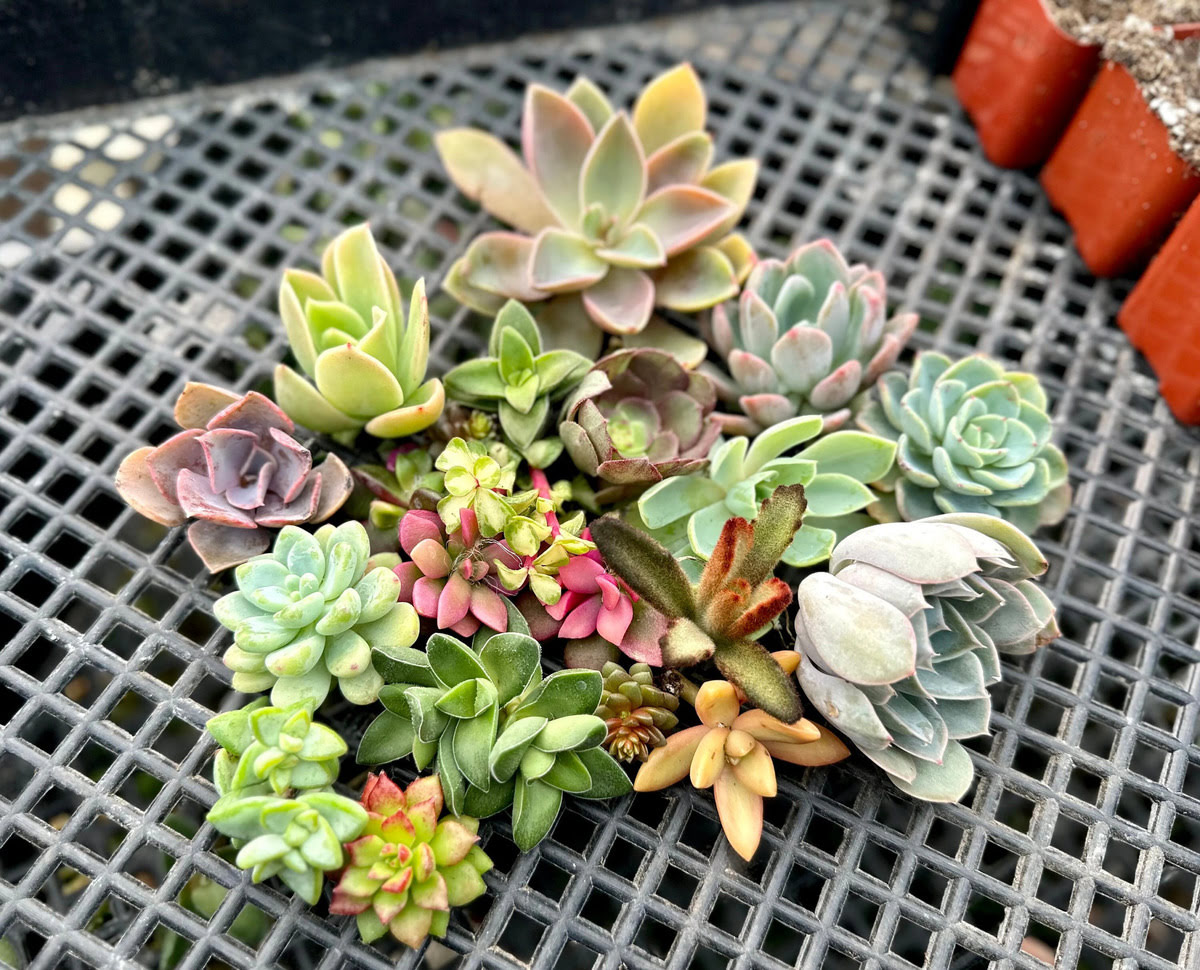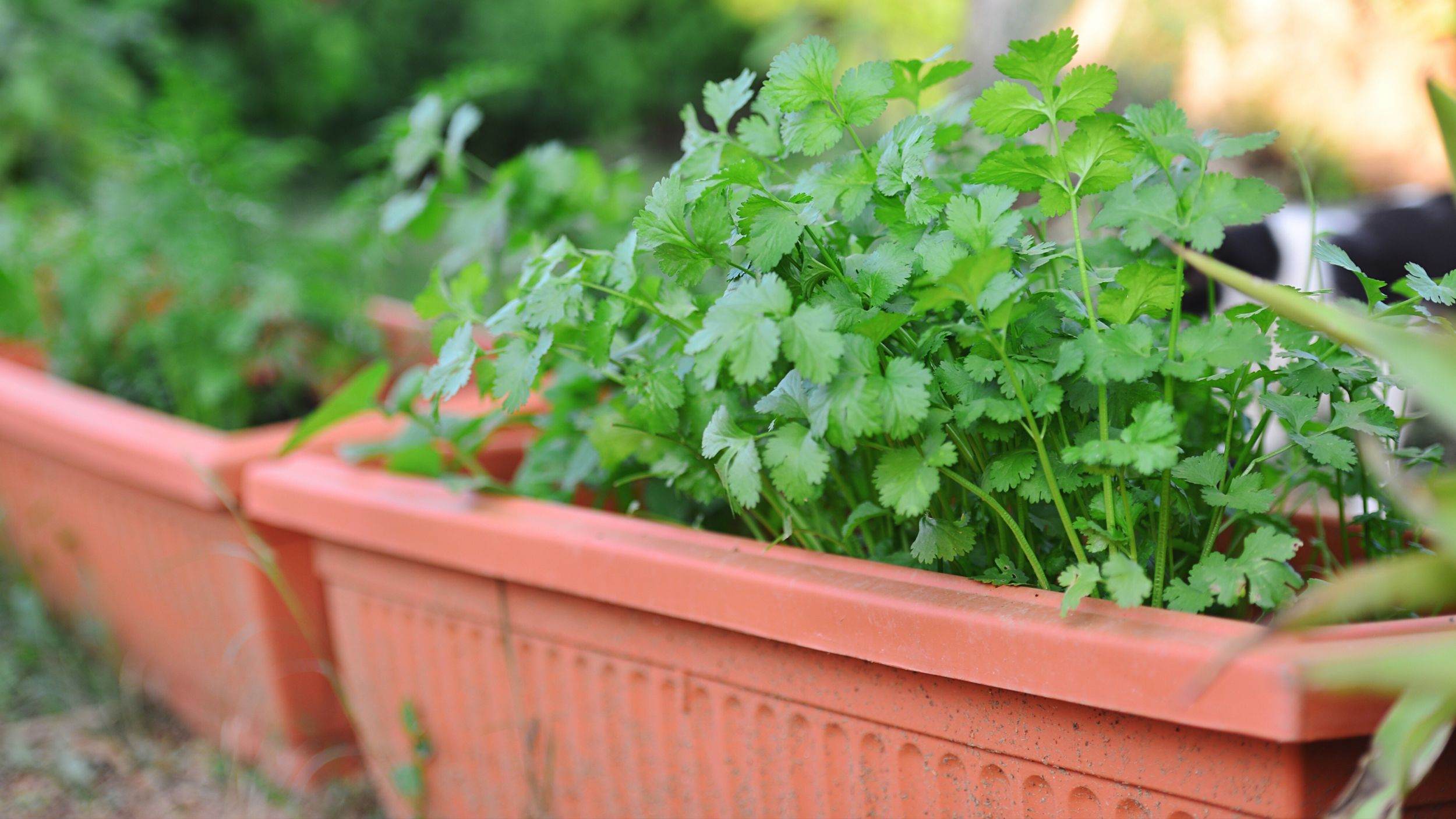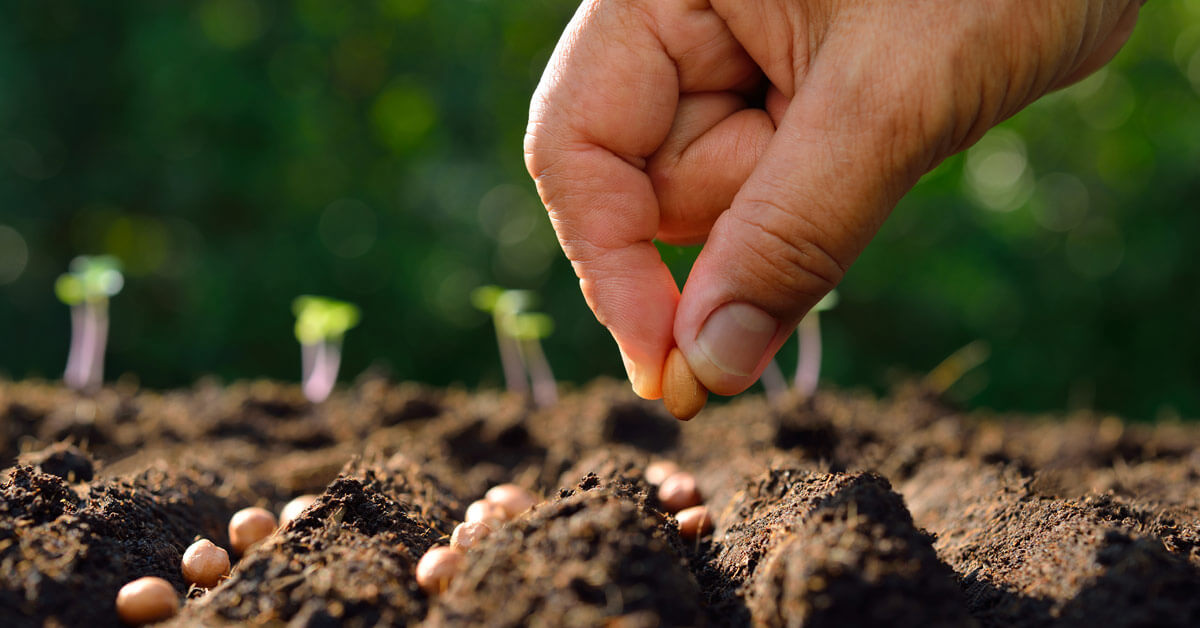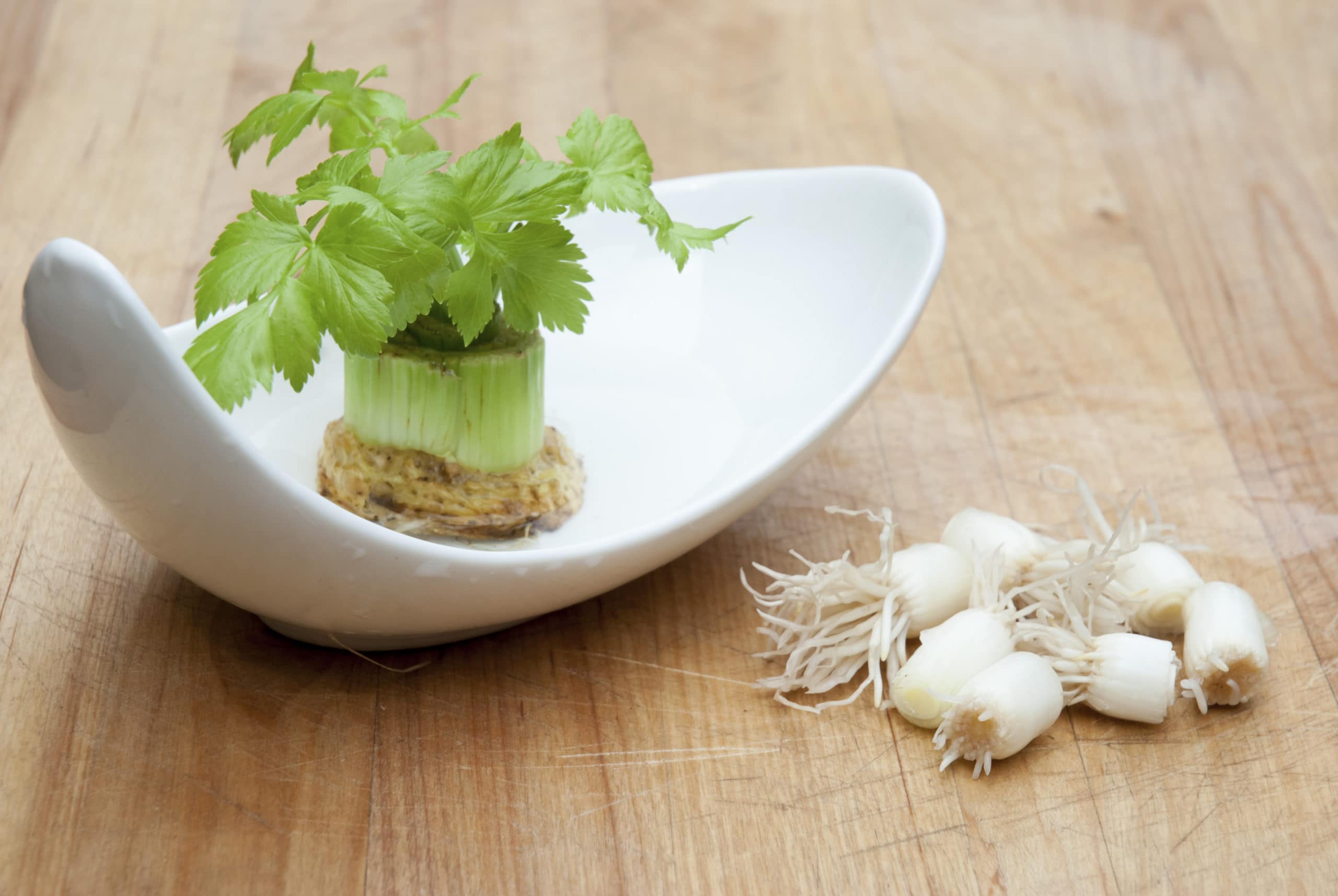Home>Gardening Techniques>Plant Care>How To Grow Trees From Cuttings
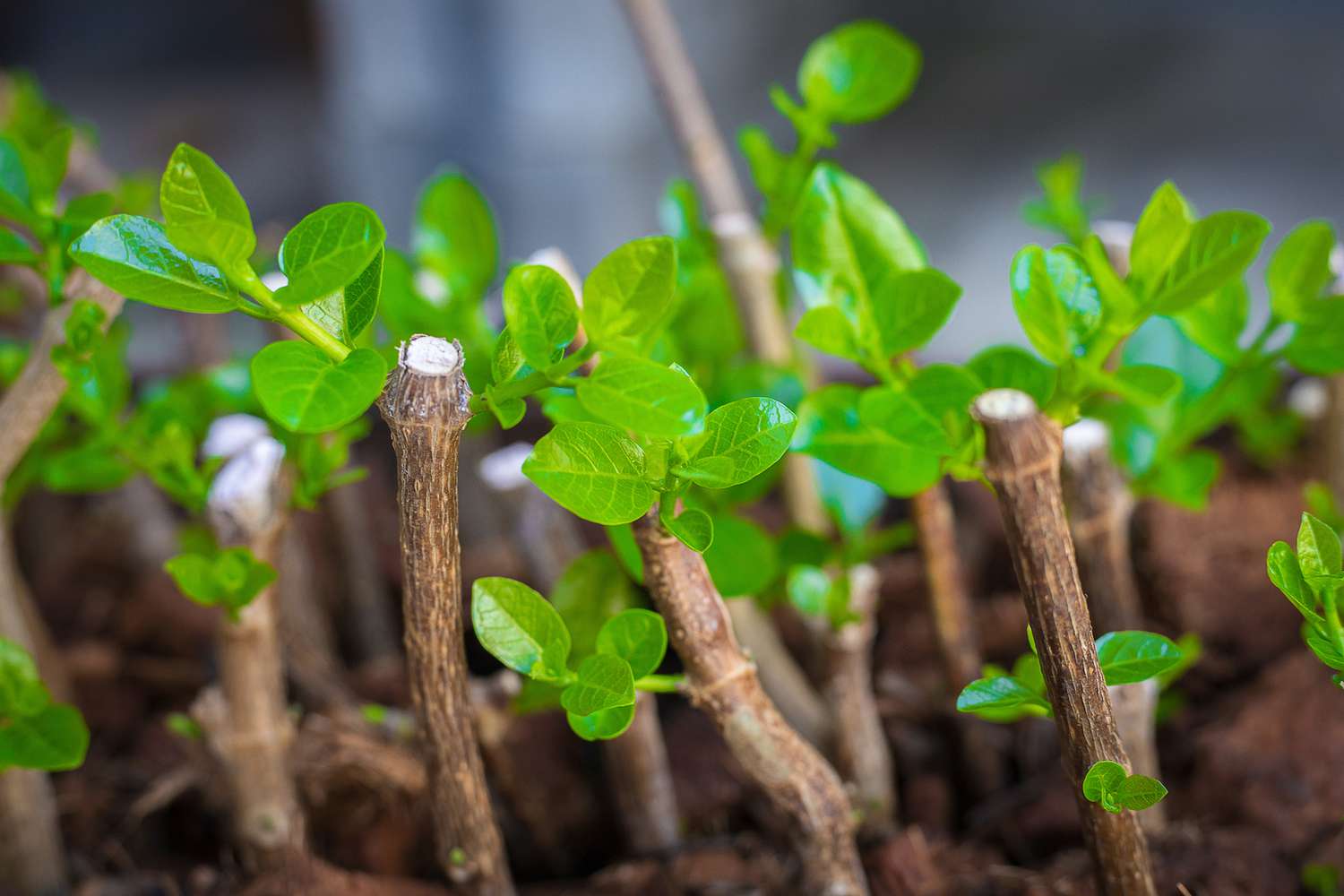

Plant Care
How To Grow Trees From Cuttings
Modified: February 9, 2024
Learn the step-by-step process of growing trees from cuttings with expert plant care tips. Start cultivating your own lush greenery today!
(Many of the links in this article redirect to a specific reviewed product. Your purchase of these products through affiliate links helps to generate commission for Chicagolandgardening.com, at no extra cost. Learn more)
Table of Contents
Introduction
Welcome to the world of tree care! Growing trees from cuttings is an exciting and rewarding endeavor that allows you to propagate new trees and beautify your surroundings. Whether you’re an avid gardener or just starting out, learning how to grow trees from cuttings is a valuable skill to have.
Tree cuttings, also known as stem cuttings or hardwood cuttings, are segments of a parent tree that can be planted to produce new trees. It’s like taking a piece of the parent tree and creating a clone. This method provides a cost-effective and efficient way to propagate trees, as it bypasses the lengthy and unpredictable process of growing trees from seeds.
There are many benefits to growing trees from cuttings. Firstly, it allows you to replicate the desirable traits of the parent tree, such as its size, shape, and disease resistance. This is especially useful when dealing with rare or unique tree varieties that may be difficult to find in nurseries.
Secondly, growing trees from cuttings can save you money. Traditional tree purchasing can be expensive, especially for larger and more established specimens. By propagating your own trees, you can eliminate or reduce the cost of buying new trees.
Moreover, growing trees from cuttings gives you a sense of control and ownership over the process. You can witness the growth and development of the new tree from its very beginning, nurturing it every step of the way.
Before we dive into the details of growing trees from cuttings, it’s important to understand the significance of selecting the right cutting materials. The success of your propagation efforts largely depends on the quality and viability of the cuttings you choose. So, let’s explore the factors to consider when selecting the right cutting materials in the next section.
What are tree cuttings?
Tree cuttings, also known as stem cuttings or hardwood cuttings, are a method of asexual reproduction in which a portion of a tree is severed and planted to produce a new tree. This process involves taking a small section of the parent tree, typically a stem or branch, and encouraging it to develop roots and ultimately grow into a new tree.
Tree cuttings can be categorized into two main types: softwood cuttings and hardwood cuttings. Softwood cuttings are taken from the current season’s growth, typically in spring or early summer when the branches are young and flexible. Hardwood cuttings, on the other hand, are taken from mature, dormant wood during the late autumn or winter months when the tree is no longer actively growing.
Softwood cuttings are generally easier to root and have a higher success rate compared to hardwood cuttings. They are more suitable for propagating deciduous trees and shrubs, as well as some coniferous species. Hardwood cuttings, on the other hand, are more commonly used for propagating trees with tougher bark, such as fruit trees and certain evergreen species.
The process of taking tree cuttings involves precise techniques to ensure the best chances of successful rooting. It begins with selecting a healthy and disease-free branch or stem from the parent tree. The selected cutting should be semi-ripe, meaning it should be neither too young and tender nor too old and woody.
Once the cutting is selected, it is important to make a clean, angled cut just below a node, which is a swelling on the stem where leaves, buds, or branches emerge. This angle aids in water absorption and prevents rotting. It is also essential to remove any leaves or flowers from the cutting, as they can divert energy from root development.
After the cutting is prepared, it is usually treated with a rooting hormone to stimulate root growth. Rooting hormones contain auxins, which are naturally occurring plant hormones that promote the formation and development of roots. The cutting is then planted in a suitable rooting medium, such as soil, sand, or a mixture of both, and placed in a controlled environment with adequate moisture and light.
With proper care and attention, the cutting will develop roots over time, establishing itself as a new tree. The process of growing trees from cuttings offers a rewarding and sustainable way to expand your tree collection and contribute to the natural environment.
Benefits of growing trees from cuttings
Growing trees from cuttings offers a range of benefits that make it an attractive option for both seasoned gardeners and beginners alike. Let’s explore some of the advantages of this method:
- Genetic replication: When you grow trees from cuttings, you can ensure that the new trees will inherit the desired traits and characteristics of the parent tree. This is particularly valuable when it comes to preserving and propagating unique or rare tree varieties. By replicating the genetics of the parent tree, you can maintain specific features such as flower color, foliage shape, fruit quality, or disease resistance.
- Cost-effective: Purchasing mature trees from nurseries can be expensive, especially if you need a large number of specimens. Growing trees from cuttings allows you to propagate multiple trees at a fraction of the cost. It eliminates the need to purchase expensive saplings or mature trees, making tree propagation a cost-effective alternative for landscaping or large-scale planting projects.
- Preservation of tree heritage: Many trees hold important cultural and historical significance. By propagating trees from cuttings, you can help preserve and perpetuate these unique species and varieties. Whether it’s an heirloom apple tree passed down through generations or a historic oak tree with environmental or symbolic importance, growing trees from cuttings helps maintain the heritage and legacy of these special trees.
- Control and customization: When you grow trees from cuttings, you have control over the selection and development of the new trees. You can carefully choose the healthiest and most vigorous branches from the parent tree, ensuring that the resulting trees are strong and resilient. Additionally, you can customize your tree collection by choosing specific varieties, colors, or growth habits that best suit your landscape or personal preferences.
- Increased success rate: Compared to growing trees from seeds, growing trees from cuttings often has a higher success rate. This is because cuttings retain the exact genetic information of the parent tree, allowing for more efficient root development. With proper care and attention, cuttings have a greater chance of rooting successfully and establishing themselves as healthy trees.
Overall, growing trees from cuttings offers a range of benefits, including genetic replication, cost-effectiveness, heritage preservation, and increased success rates. It’s a rewarding and sustainable method that allows you to expand your tree collection while preserving valuable tree varieties.
Selecting the right cutting materials
Choosing the right cutting materials is crucial for successful tree propagation. The quality and viability of the cuttings directly impact the rooting and growth of the new trees. Here are some factors to consider when selecting the right cutting materials:
- Health and vigor: It’s important to select cuttings from healthy and disease-free trees. Look for trees that show no signs of pest infestation, fungal infections, or other diseases. Healthy trees have strong and vibrant foliage, with no signs of wilting or discoloration. Choosing cuttings from thriving trees increases the chances of successful root development.
- Age and maturity: Different tree species and varieties have specific requirements when it comes to the age and maturity of the cuttings. Softwood cuttings are usually taken from young and flexible stems, while hardwood cuttings are taken from mature, dormant wood. Understanding the recommended age and maturity of the cuttings for your specific tree species ensures optimal rooting and growth.
- Seasonality: The best time to take tree cuttings depends on the species and their natural growth patterns. For most deciduous trees, softwood cuttings are taken in spring or early summer when the branches are actively growing. In contrast, hardwood cuttings are taken during the late autumn or winter months when the tree is dormant. Research the specific seasonality requirements of your tree species to select the right cutting materials.
- Size and length: When choosing cuttings, consider the ideal size and length for your specific tree species. Generally, cuttings should be around 6-8 inches long, but this can vary depending on the type of tree and the propagation techniques being used. Avoid using excessively long or short cuttings, as they may impact successful rooting and growth.
- Number of nodes: Nodes are the areas on the stem where leaves, buds, or branches emerge. When selecting cuttings, look for sections that have multiple nodes. These nodes are the sites where new roots will eventually develop. Choosing cuttings with more nodes increases the chances of successful rooting and ultimately leads to stronger and healthier trees.
Remember to always use clean and sharp tools when taking cuttings to minimize damage to the parent tree and the cuttings themselves. It’s also recommended to take multiple cuttings to increase the chances of success, as not all cuttings will root successfully.
By carefully selecting the right cutting materials, you set a strong foundation for successful tree propagation. The quality and characteristics of the cuttings play a significant role in determining the root development, growth, and future success of the newly propagated trees.
Preparing the cuttings
Preparing the cuttings properly is a crucial step in the process of growing trees from cuttings. Take the time to follow these important steps to increase the chances of successful rooting and ensure the healthy growth of your new trees:
- Clean and sterilize: Before preparing the cuttings, it’s essential to clean and sterilize your tools to prevent the spread of diseases. Use a disinfectant solution or rubbing alcohol to sanitize your pruning shears, knife, or any other cutting tools you’ll be using.
- Choose the right stems: Select the stems or branches that are suitable for taking cuttings. Look for healthy, disease-free, and vigorous stems with firm bark. Avoid using overly young or overly mature stems, as they may have lower chances of rooting successfully.
- Make clean cuts: Using clean and sharp pruning shears or a knife, make a clean and slanted cut just below the node. A slanted cut exposes more surface area for rooting and prevents water from pooling at the cut end, reducing the likelihood of rotting. Aim for a 45-degree angle, which maximizes the area for rooting without compromising the overall health of the cutting.
- Remove excess leaves and buds: Remove any excess leaves, flowers, or buds from the lower portion of the cutting. These can divert energy away from root development and may increase the chances of the cutting drying out. Leave a few uppermost leaves intact to support photosynthesis and provide some nutrition while the cutting develops roots.
- Apply rooting hormone: Applying a rooting hormone can significantly boost the success rate of rooting cuttings. Dip the bottom end of the cutting in a powdered or liquid rooting hormone, following the instructions provided by the manufacturer. The rooting hormone contains growth-promoting substances that encourage the formation of roots.
- Plant or store the cuttings: After applying the rooting hormone, plant the cuttings in a suitable rooting medium immediately. The rooting medium can be a mix of perlite, vermiculite, sand, or a well-draining potting soil. Make sure the medium is moist but not waterlogged, as excessive moisture can lead to rotting. Alternatively, you can wrap the cuttings in a damp paper towel or store them in a plastic bag in the refrigerator until you’re ready to plant.
Remember to provide adequate care to the cuttings during this preparatory stage. Keep them in a cool and shaded location to avoid excessive heat or sunlight. Mist them with water regularly to maintain humidity, but be cautious not to overwater them, as this can lead to rotting. With proper preparation, your cuttings will be primed for successful root development and healthy growth.
Rooting medium options
The choice of rooting medium is crucial for the successful propagation of tree cuttings. The rooting medium provides support, moisture, and adequate aeration for the developing roots. There are several options available, each with its own advantages and considerations. Here are some common rooting medium options to consider:
- Perlite: Perlite is a lightweight, porous material made from volcanic glass. It is commonly used as a rooting medium because of its excellent drainage properties. Perlite retains enough moisture to keep the cuttings hydrated but allows excess water to drain away, preventing waterlogged conditions that can lead to root rot. It also provides good aeration for root development.
- Vermiculite: Vermiculite is another popular choice for a rooting medium. It is a natural mineral that is lightweight and moisture-retentive. Vermiculite holds water well, providing a constant moisture supply to the cuttings. This medium promotes root development and reduces the risk of drying out. However, vermiculite can compact over time, reducing aeration, so it is often mixed with other materials like perlite or sand to improve drainage.
- Sand: Sand is a common component in rooting mixtures because of its excellent drainage capabilities. It allows water to flow freely through the medium, preventing waterlogging. Sand is especially beneficial for cuttings that are prone to rotting. However, it is important to use coarse or horticultural-grade sand rather than fine sand, as fine sand can compact and suffocate the roots.
- Peat moss or peat-based mixes: Peat moss is an organic material derived from decomposed plant matter found in bogs. It has excellent water retention properties and provides a stable environment for root development. Peat-based mixes are often combined with other materials like perlite or vermiculite to improve drainage. However, it is important to note that the extraction of peat moss contributes to environmental concerns and alternatives like coconut coir or compost-based mediums may be more sustainable options.
- Soil-based mixtures: Soil-based mixtures can also be used as rooting mediums, especially when propagating trees that prefer a more substantial growing environment. These mixtures contain a combination of garden soil, sand, and organic matter, such as compost or well-rotted manure. Soil-based mixtures provide a familiar substrate and can be suitable for certain types of trees. It is important to ensure that the soil is well-draining to prevent waterlogging and allow for adequate root development.
When selecting a rooting medium, consider the specific needs and preferences of the tree species you are propagating. Some trees may require a well-draining medium, while others appreciate a slightly more moisture-retentive medium. Experimentation and observation will help you determine the best rooting medium for your specific trees.
Remember to keep the rooting medium consistently moist but not saturated. Regularly check the moisture level and adjust watering as needed to provide optimal conditions for root development. With the right rooting medium, you can create an environment that encourages the successful rooting and establishment of your tree cuttings.
Planting the cuttings
Once you have prepared your cuttings and selected the appropriate rooting medium, it’s time to plant them. The planting process plays a crucial role in providing the right environment for the cuttings to develop roots and grow into healthy trees. Here are the steps to follow when planting your tree cuttings:
- Prepare the containers: Choose containers that are wide and deep enough to accommodate the cuttings’ root systems. Make sure the containers have drainage holes to allow excess water to escape. Clean and sanitize the containers to prevent the spread of diseases or pests.
- Fill the containers: Fill the containers with the chosen rooting medium. Make sure the medium is evenly spread and lightly packed to provide support and ample aeration for the roots.
- Make planting holes: Use your finger or a dibber to create planting holes in the rooting medium. The holes should be deep enough to accommodate around two-thirds of the cutting’s length. Gently widen the hole at the bottom to avoid damaging the base of the cutting.
- Plant the cuttings: Carefully insert the prepared cuttings into the planting holes, making sure to maintain the correct orientation (top-up and bottom-down). Press the medium around the base of the cutting to secure it in place, ensuring good soil-to-cutting contact for optimal rooting.
- Space the cuttings: Space the cuttings adequately to allow for proper air circulation and prevent overcrowding. Each cutting should have enough space to spread its roots and leaves without being obstructed by neighboring cuttings.
- Water the cuttings: After planting, water the cuttings thoroughly to settle the soil and provide initial moisture. Use a gentle stream of water to avoid dislodging the cuttings. Ensure that the water drains properly from the containers, as excessive water retention can lead to root rot.
- Provide appropriate light and temperature: Place the containers in a suitable location that provides the right levels of light and temperature for the specific tree species. Most cuttings benefit from bright but indirect light and temperatures around 65-75°F (18-24°C). Avoid exposing the cuttings to intense sunlight or extreme temperature fluctuations.
- Maintain moisture: Regularly monitor the moisture level of the rooting medium and keep it consistently moist. Mist the cuttings with water as needed to maintain humidity, but be cautious not to overwater, as excessively wet conditions can lead to root rot. Aim for a balance of moisture that promotes root growth without waterlogging the cuttings.
- Monitor and adjust: Keep a close eye on the cuttings for any signs of stress, disease, or pest infestation. Adjust the moisture levels, lighting, and temperature as needed to create an optimal environment for root development. It’s normal to see some wilting initially, but if the cuttings show severe signs of stress, you may need to provide additional care or make adjustments.
Remember to be patient and have realistic expectations when it comes to the rooting and growth of your cuttings. The process takes time, and not all cuttings may successfully root. However, with proper planting techniques and attentive care, you increase the chances of growing healthy, thriving trees from your cuttings.
Providing proper care and maintenance
Once your tree cuttings are planted, it’s essential to provide them with the proper care and maintenance to ensure their growth and development. Following these guidelines will help create an optimal environment for your cuttings to thrive:
- Watering: Regular watering is crucial for the success of your cuttings. Keep the rooting medium consistently moist, but avoid overwatering, as it can lead to root rot. Monitor the moisture levels and adjust watering accordingly, especially during hot and dry periods.
- Lighting: Provide the cuttings with appropriate lighting conditions. Most cuttings benefit from bright, indirect light. If natural light is insufficient, supplement it with artificial lighting, such as fluorescent or LED grow lights. Ensure that the cuttings do not receive direct sunlight, as it can be too intense and potentially harm the developing roots and leaves.
- Temperature and humidity: Maintain a suitable temperature and humidity level for your cuttings. Many cuttings thrive in temperatures between 65-75°F (18-24°C). Avoid exposing them to extreme temperature fluctuations or drafts. If the humidity is too low, mist the leaves with water or use a humidifier to increase moisture in the surrounding environment.
- Fertilizing: Initially, the cuttings do not require much fertilizer as they primarily rely on stored energy. However, after a few weeks, you can start applying a diluted, balanced fertilizer to provide essential nutrients. Follow the instructions on the fertilizer package and avoid overfertilizing, as it can lead to excessive leaf growth and weak root development.
- Pruning: Regularly inspect the cuttings for any signs of disease or damaged parts. Prune away any dead or infected leaves or stems to prevent the spread of diseases. Take care when pruning not to disturb the developing roots or cause further damage to the cuttings.
- Protect from pests: Keep a close eye on the cuttings for any signs of pest infestation, such as aphids, mealybugs, or spider mites. If you notice any pests, use appropriate organic or chemical pest control methods to eliminate them. Be cautious with chemical treatments, as they may harm the delicate roots and leaves of the cuttings.
- Monitoring growth: Regularly observe the growth of the cuttings. New leaf growth and the emergence of roots are positive signs that the cuttings are establishing themselves. However, not all cuttings may root successfully. Be patient and remove any cuttings that do not show signs of growth after a reasonable period.
- Transplanting: Once the cuttings have developed a strong root system and established themselves, it may be time to transplant them into larger containers or the ground. Choose a suitable planting location and take care to avoid disturbing the roots during the transplantation process.
By providing proper care and maintenance, you create an optimal environment for your tree cuttings to grow and thrive. Regular monitoring, appropriate watering, lighting, and temperature control, along with necessary pruning and pest management, will contribute to the healthy development of your newly propagated trees.
Common challenges and troubleshooting
While growing trees from cuttings can be a rewarding experience, it’s important to be aware of common challenges that may arise and know how to troubleshoot them. Here are some common issues you may encounter and tips to overcome them:
- Poor rooting: Not all cuttings will successfully root. If you notice that many or all of your cuttings are failing to develop roots, it may be due to factors such as poor cutting quality, incorrect planting depth, or inadequate moisture levels. Ensure that you are using healthy cuttings, planting them at the right depth, and maintaining consistent moisture levels in the rooting medium.
- Root rot: Excessive moisture or poor drainage can lead to root rot, which is characterized by yellowing leaves, wilting, and a foul odor. To prevent root rot, adjust the watering frequency and ensure that the containers have proper drainage holes. If root rot occurs, remove the affected cuttings and adjust the watering regimen accordingly.
- Pest infestation: Cuttings are susceptible to pest infestations, such as aphids, mealybugs, or spider mites. Inspect the cuttings regularly and take action at the first sign of pests. Treat the affected cuttings with the appropriate organic or chemical pest control method, following the instructions carefully to avoid harming the delicate roots and leaves.
- Wilting: Wilting can occur due to underwatering, overwatering, or excessive transpiration. Check the moisture levels in the rooting medium and adjust the watering accordingly. Ensure that the containers are not placed in direct sunlight or exposed to high temperatures, as excessive heat can lead to wilting. Providing appropriate shading or misting the leaves can help alleviate wilting.
- Stunted growth: If your cuttings are not showing signs of growth or appear to be growing slowly, it could be due to factors such as inadequate nutrients, insufficient light, or incompatible temperature conditions. Make sure the cuttings receive adequate light, consider applying a balanced fertilizer, and ensure that the temperature and humidity levels are suitable for the specific tree species. Patience is also important, as some cuttings may take longer to establish than others.
- Disease: Cuttings can be vulnerable to fungal or bacterial diseases. To prevent diseases, use clean pruning tools for taking cuttings, provide good airflow around the plants, and avoid overwatering. If you notice signs of disease, such as spots, discoloration, or wilting, remove the affected cuttings promptly and apply appropriate organic or chemical treatments to prevent the spread of the disease.
Remember that not all challenges can be avoided, and some cuttings may not root successfully despite your best efforts. Gardening is a continuous learning process, and troubleshooting common challenges will improve your skills over time. Don’t be discouraged by setbacks, and keep experimenting and refining your propagation techniques.
Conclusion
Growing trees from cuttings is a rewarding and sustainable way to propagate new trees and expand your collection. By following the proper techniques and providing the right care, you can successfully root and nurture cuttings into healthy, thriving trees. From selecting the right cutting materials to preparing them, choosing the rooting medium, planting, and providing maintenance, every step is crucial in ensuring the success of your propagation efforts.
Through the process of growing trees from cuttings, you have the opportunity to replicate desirable traits, save money, and contribute to the preservation of tree heritage. The ability to create new trees that inherit the characteristics of their parent trees offers a sense of control and customization in your tree collection.
While challenges may arise, such as poor rooting or pest infestations, it’s important to troubleshoot and learn from these experiences. By understanding the common issues and taking appropriate measures, you can improve your skills and increase your chances of success.
Remember, growing trees from cuttings is a journey that requires patience, observation, and experimentation. Each tree species may have unique requirements and characteristics that influence their rooting and growth. Learning from your successes and failures will not only enhance your knowledge but also deepen your appreciation for the beauty and resilience of trees.
So, whether you’re a novice gardener or a seasoned enthusiast, embrace the world of tree care and take delight in the magical process of growing trees from cuttings. With dedication and a touch of green thumb, you can create a bountiful and diverse tree collection, adding natural beauty and environmental benefits to your surroundings.
